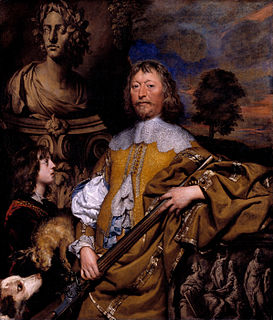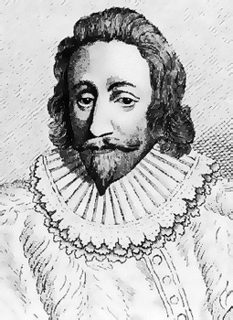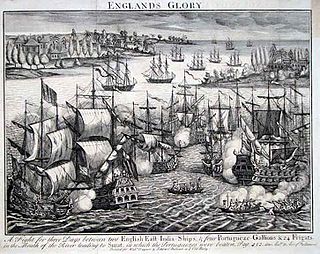The Courteen association, later called the Assada company was an English trading company founded in 1635 in an attempt to break the monopoly of the East India Company in trade with India.

The East India Company (EIC), also known as the Honourable East India Company (HEIC) or the British East India Company and informally as John Company, Company Bahadur, or simply The Company, was an English and later British joint-stock company. It was formed to trade in the Indian Ocean region, initially with Mughal India and the East Indies, and later with Qing China. The company ended up seizing control over large parts of the Indian subcontinent, colonised parts of Southeast Asia, and colonised Hong Kong after a war with Qing China.

India, also known as the Republic of India, is a country in South Asia. It is the seventh largest country by area and with more than 1.3 billion people, it is the second most populous country as well as the most populous democracy in the world. Bounded by the Indian Ocean on the south, the Arabian Sea on the southwest, and the Bay of Bengal on the southeast, it shares land borders with Pakistan to the west; China, Nepal, and Bhutan to the northeast; and Bangladesh and Myanmar to the east. In the Indian Ocean, India is in the vicinity of Sri Lanka and the Maldives, while its Andaman and Nicobar Islands share a maritime border with Thailand and Indonesia.
The East India Company was founded by a charter in 1600 with a fifteen-year monopoly on trade with the east and extended in 1609 by King James I to an indefinite period subject to a 3-year notice of the revocation. This monopoly caused jealousy among merchants who did not subscribe to it and in 1635 King Charles I granted a trading license to Sir William Courteen under the name of the Courteen association permitting it also to trade with the east at any location in which the East India Company had no presence. [1] Courteen's fellow promoters included Endymion Porter, groom of the King's bedchamber and Sir Francis Windebank, his Secretary of State. [2]

Charles I was the monarch over the three kingdoms of England, Scotland, and Ireland from 27 March 1625 until his execution in 1649.

Endymion Porter (1587–1649) was an English diplomat and royalist.

Sir Francis Windebank was an English politician who was Secretary of State under Charles I.
The company had a troubled beginning, it was badly managed, lost ships at sea and suffered a collapse in 1646, after which Courteen fled to the continent where he died. [1]
During the English civil war the Crown gave its support to the Courteen association and badly treated the East India merchants, causing them to generally support Parliament. In 1649 the Courteen Association changed its name to the Assada company. [1]
The enmity between the two trading organisations continued until a settlement was ordered by Oliver Cromwell as Lord Protector and the two merged in 1657. [3]

Oliver Cromwell was an English military and political leader. He served as Lord Protector of the Commonwealth of England, Scotland, and Ireland from 1653 until his death, acting simultaneously as head of state and head of government of the new republic.
Lord Protector is a title that has been used in British constitutional law for the head of state. It is also a particular title for the British heads of state in respect to the established church. It is sometimes used to refer to holders of other temporary posts, for example, a regent acting for the absent monarch.







